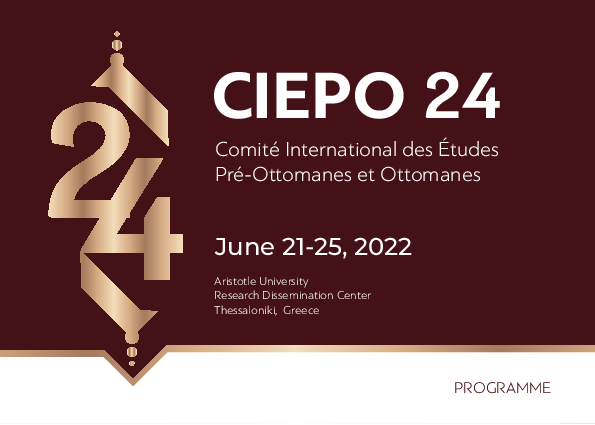LECTURE
Aestheticing Turkish Nationalism: Islamic Imagery in the Landscape Paintings of the Ottoman Military Painter Hüseyįn Zekaį (1860-1919)
Ekin Akalin
CIEPO 24, Aristotle University Research Dissemination Center, Thessaloniki, Greece
23 June 2022
Ekin Akalin will give a lecture entitled “Aestheticing Turkish Nationalism: Islamic Imagery in the Landscape Paintings of the Ottoman Military Painter Hüseyįn Zekaį (1860-1919)”, at the 24th Conference of the International Committee for Pre-Ottoman and Ottoman Studies (CIEPO), hosted at the Aristotle University Research Dissemination Center, Thessaloniki, Greece.
Military painters were the first generation of artists who introduced the systematic use of ‘modern’ practices of art in the Ottoman Empire. Alongside their personal Islamic background, the professional commitment of these painters to the Ottoman state which remained under strong influence of Sharia until its last day, led them quest modern ways to represent Islam on visual dimension. In the era that preceded the writing of Boğaziçi Mehtapları (Moonlights of Bosphorus) dedicated to the reflection of Turkish culture through the sublime topography of the Bosphorus by Abdülhak Şinasi Hisar in 1941, the quest of an aesthetics by the Ottoman military painters through Islamic Art was a way to sow the seeds of Turkish nationalism in a visual dimension.
The military painter Hüseyin Zekai was among those military painters most dedicated to Islamic imagery. Chosen by the Sultan Abdulhamid II himself to be included in the “yaver (Sultan’s assistant)” class of military school, Hüseyin Zekai wrote a book on the cultural heritage of the Ottoman Empire in 1329/1913 in which he theorized the Islamic aesthetics he depicted in this landscape paintings. In his book Holy Treasures (Mübeccel Hazineler), he defined the aesthetic reflected by the Ottoman monuments of the classical era as being part of “national arts (sanayi-i milli)”. Among the 49 articles contained in this book, his article on “Aya Sofya Camii-i Şerifi (Holly Mosque of Hagia Sofia)” is particularly significant due to his reference to the Ottoman mobilier dating back to 19th century that he qualifies as “Turkish style (Türk uslub-u mimarisi)”.
This paper aims to investigate the visual emergence of Turkism in the Ottoman Empire during the long 19th century. It intends to demonstrate how Turkism became a dominant cultural reference by means of a sublime aesthetics of landscape. Alongside the reflection of Turkism in politics and sciences, the analysis of the visual discourse is a chance to question the ways in which nationalic politics determined by the Sublime Porte were represented in the daily life. Studying the visual perception mechanisms that contributed to the public opinion of the late 19th century is a way to question the role that visual arts played in the spreading of nationalism in the Turkish Republic since its foundation until today.

More information here.
